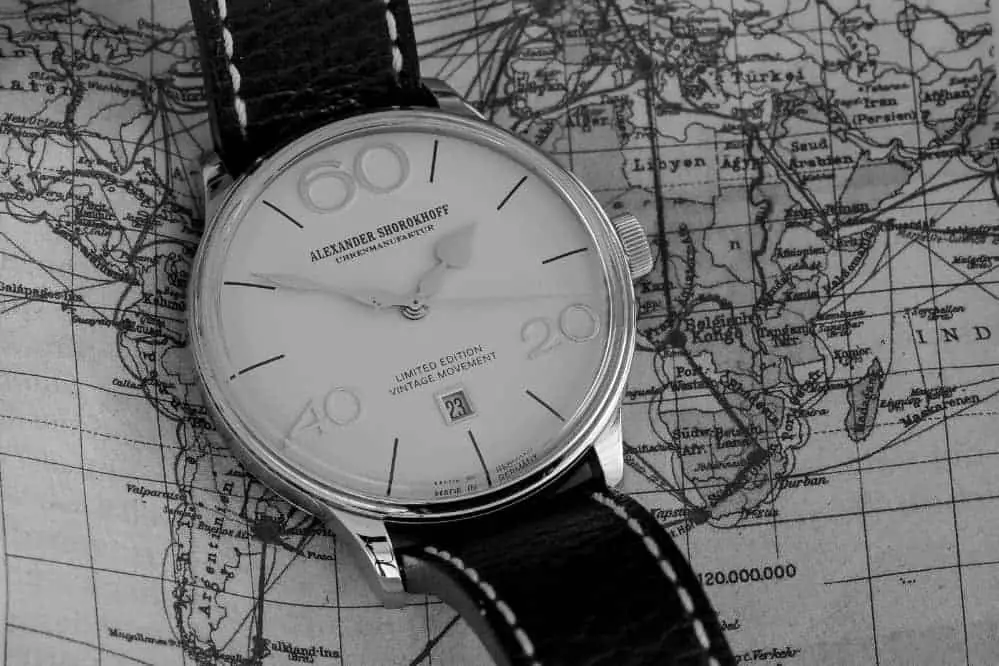Vintage watches are beautiful pieces of jewelry, and many people even collect them. Indeed, you can find some amazing vintage watches if you keep your eyes open for them, but if you expect these watches to work just like modern watches do, you’ll be disappointed. The accuracy of vintage watches will vary depending on two main factors:
- The overall quality and craftsmanship of the watch when it was manufactured.
- How well the previous owners took care of the watch since it was made.
As you can imagine, a watch that is 30, 40, or 60 years old could have had lots of different owners, and if any of those owners forgot to service the watch regularly or just didn’t take good care of it, this is going to affect how accurate the watch is when it comes to telling time. So, if you want to know how accurate the vintage watch you just bought is, the answer is always, it depends.
How Accurate Should a Vintage Watch Be in Keeping Time?
Most vintage watches are accurate to within one to three minutes per day, and while that doesn’t sound like much, a three-minute difference per day adds up quickly. Some vintage watches are off by less than a minute per day, but once you become familiar with your vintage watch, you’ll learn how it runs each day and what to expect when it comes to setting the time. If it’s losing (or gaining) one to three minutes per day, you’ll likely have to reset the time every morning to keep it accurate, but it’ll be worth it because you’re wearing a vintage watch!
To know for sure how much time your watch is gaining or losing takes a little vigilance, so pay close attention to your watch throughout the day and make sure you compare it with a watch you know is accurate. It shouldn’t take long for you to notice its accuracy.
Factors Affecting Vintage Watch Accuracy
As you can imagine, there are factors that affect the accuracy of a vintage watch, and this is in addition to the two factors mentioned earlier. Keep in mind that any watch, regardless of its age, is very intricately designed with a lot of components that have to work together to provide you with the time at any given moment. Over time, especially if the watch isn’t receiving the care it needs, things can get into these components and cause them to work improperly, which directly affects its accuracy. Along with improper long-term care, other things that can affect the accuracy of a vintage watch include:
- Balance jewel that is cracked. The jewel is one of the most important components of a watch, and unless the vintage watch you own has a sapphire jewel – which is doubtful – it can crack. Replacing the jewel in a watch is sometimes very expensive, but it can still be done.
- Broken pivot. The pivot sits on the inside of the watch right in the middle and helps keep all of the other components balanced. If the pivot is broken, the components won’t be balanced properly. Other things can also go wrong with the pivot, and until you get it repaired or replaced, it can affect the watch’s accuracy.
- Rust. Older watches were rarely water-resistant, so if any of the previous owners got any water on the watch, it can rust either on the inside or the outside, and rust is disastrous to vintage (and even modern) watches.
You have to keep in mind that the components inside of a vintage watch could be different from the components used today, especially because the watches of today are using updated technology to operate. Any one of those components could be working improperly or need to be repaired or replaced. Until everything inside of the watch is working exactly as it should, the accuracy of your vintage watch can be affected.
Conclusion
Vintage watches are a joy to own, and if you’re just collecting them, you may not care how accurate they are. But if you intend to wear your vintage watch, you need to be aware of the fact that the time may not be 100% accurate like it is with your regular watch. It’s easy to adjust the watch to get the right time, but you have to know how many seconds or minutes it’s off first.
